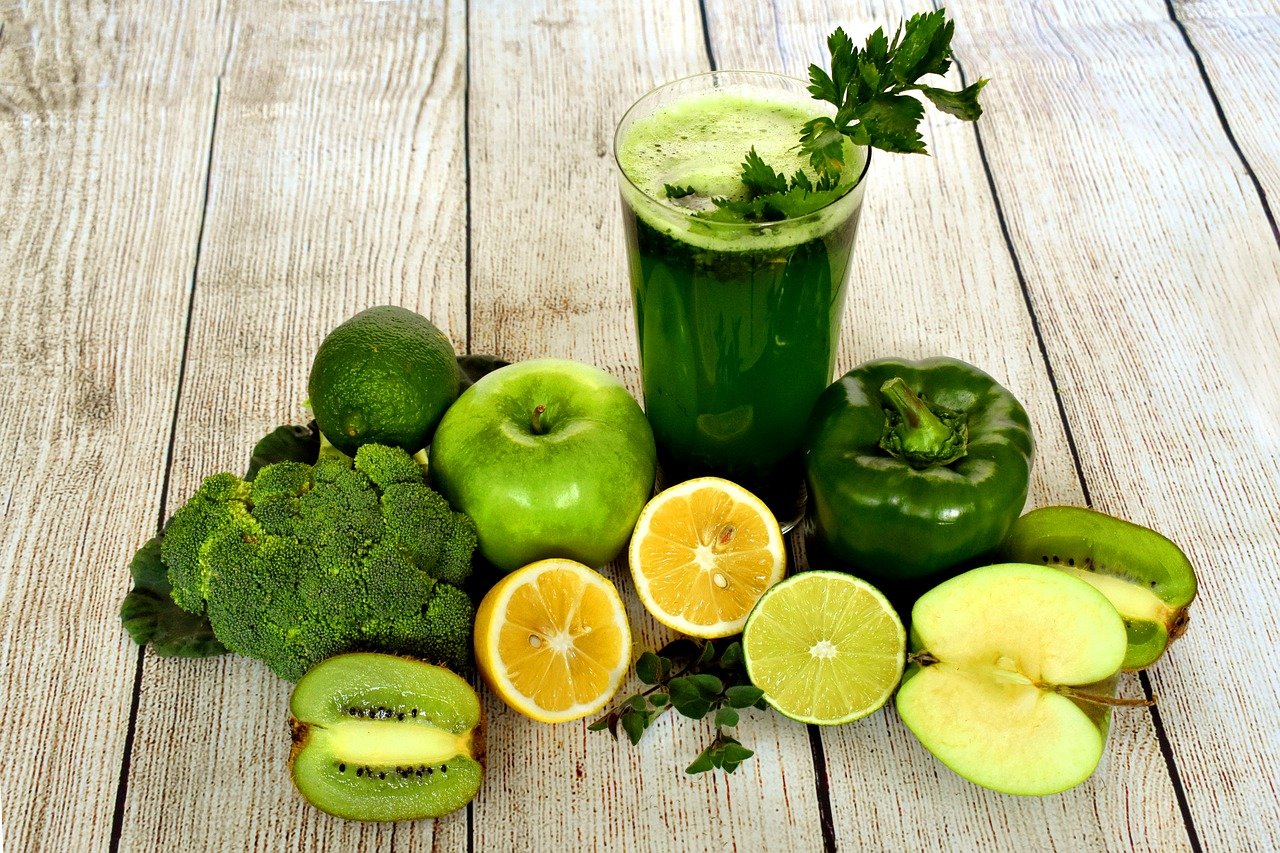| Macronutrient | Function | Symptoms of deficiency | Symptoms of excess | Sources of macronutrient | Reference Nutrient Intake (RNI) per day |
| Carbohydrates:
Sugars |
Provide energy, construction of body tissues and nerve cells | Hypoglycemia (not enough sugar in the blood), feelings of hunger, ketosis (bad breath, confusion, tiredness, sickness), headaches, constipation | Tooth decay, carbs become stored as fat, develop type 2 diabetes | Milk, fruit, vegetables, honey, sugary foods (made with added table sugar), fruit juice | Not set |
| Carbohydrates:
Starches |
Provide energy, construction of body tissues and nerve cells | Hypoglycemia (not enough sugar in the blood), feelings of hunger, ketosis (bad breath, confusion, tiredness, sickness), headaches, constipation | Carbs become stored as fat, develop type 2 diabetes | Cereals, potatoes, pasta, rice, bread | Not set |
| Proteins | Regulates processes in the body, growth and repair, provide energy, acquire muscle mass and tone | Malnutrition – muscle wastage (atrophy) as body converts the protein into fat to use as energy, metabolic disorders (diabetes), low energy, fatigue | Metabolic disorders (control of specific amino acids needed), excess protein stored as fat | Meat, fish, eggs, cheese, milk, pulses, cereals, nuts | 0-3 months 12.5g
4-6 months 12.7g 7-9 months 13.7g 10-12 months 14.9g 1-3 years 14.5g 4-6 years 19.7g 7-10 years 28.3g Adults 0.75g of protein per 1kg of body weight Pregnancy +6g Lactation 0-6 months 11g Lactation 6+ months 8g |
| Fats | Provides energy, essential fatty acids make cell membranes and form hormones, allow fat soluble vitamins to be absorbed, protect internal organs | Hunger, unable to regulate body temperature, for women amenorrhea may occur, dry skin | Obesity, coronary heart disease – high cholesterol, diabetes type 2 (all from excess of saturated fats or trans fatty acids) | Meat, fish, eggs, milk, sunflower seed, rapeseed, peanuts, tree nuts, coconut, olives, soya beans, avocado | Not set
|
| Fat Soluble Vitamin | Main function | Deficiency | Food sources | Reference Nutrient Intake (RNI) per day |
| A | Helps vision
Immune system Maintains healthy skin and mucus membranes Normal growth in children |
Night blindness may be first symptom of Vitamin A deficiency
Blindness, eye conditions; xerophthalmia Growth retardation |
Full fat milk, cheese eggs, oily fish, liver, butter, carrots, spinach, broccoli | 0-12 months 350?g
1-3 years 400?g 7-10 years 500?g 11-14 years 600?g Males: 15+ 700?g Females 15+600?g Pregnancy +100?g Lactation +350?g |
| D | Enables calcium to be absorbed by the intestines
Bone, teeth and muscle health |
Rickets in children, osteomalacia in adults; weakened bones
Bone or muscle pain Depression or fatigue |
Sunlight on skin, meat (especially lean and red), oily fish, egg yolks, liver | 0-6months 8.5?g
7 months to 64 years 7?g 65 + 10?g Pregnancy and Lactation 10?g |
| E | Antioxidant (against diseases)
Healthy cell membranes (against heart disease and cancer) Healthy skin and eyes |
Neurological issues
Muscle weakness Retina degeneration Haemolysis of red blood cells |
Polyunsaturated oils (soya, vegetable oils), oily fish, wholegrains, cereals, green leafy vegetables, nuts, seeds | Not set |
| K | Blood clotting
Healthy bones |
Rare but newborn babies may be deficient
Excessive or easy to bleed (menstrual, nose, gums, internal) Easy to bruise |
Leafy green vegetables, red meat, cereals, vegetable oils | Not set |
| Water Soluble Vitamin | Main function | Deficiency | Food sources | Reference Nutrient Intake (RNI) per day |
| Thiamine (B1) | Break down and release energy from food
Healthy nervous system |
Headaches, fatigue, depression, abdominal cramp, cardiac failure, nerve inflammation, loss of appetite and weight}all can cause beriberi disorder | Fresh and dried fruit, peas, eggs, wholegrain bread, liver, fortified cereals | 0-9months 0.2mg
10-12 months 0.3mg 1-3 years 0.5mg 7-10years 0.7mg Males: 11-14 years 0.9mg 15-18 years 1.1mg 19-50 years 1.0mg 50 + years 0.9mg Females: 11-14 years 0.7mg 15-50+ years 0.8mg Pregnancy +0.1mg last trimester only Lactation +0.2mg |
| Riboflavin (B2) | Healthy skin, eyes, nervous system
Release energy from food |
Swollen throat and tongue, skin cracking and dermatitis, anaemia, deterioration of eyes, thyroid and metabolic disorders, mood changes | Milk, eggs, fortified cereals, rice | 0-12 months 0.4mg
1-3 years 0.6mg 4-6 years 0.8mg 7-10 years 1.0mg Males: 11-14 1.2mg 15-50+years 1.3mg Females: 11-50+years 1.1mg Pregnancy +0.3mg Lactation +0.5mg |
| Niacin (Nicotinic acid/ B3) | Release energy from food
Healthy nervous system |
Dermatitis, diarrhea and other digestive disorders, dementia (pellagra), mucus membrane swelling, | Meat, fish, wheat flour, eggs, milk | 0-6 months 3mg
7-9 months 4mg 10-12 months 5mg 1-3 years 8mg 4-6 years 11mg 7-10years 12mg Males: 11-14years 15mg 15-18 years 18mg 19-50 years 17mg 50+years 16mg Females: 11-14 years 12mg 15-18 years 14mg 19-50 years 13mg 50+years 12mg Pregnancy no change Lactation +2mg |
| B6 (pyridoxine) | Helps body use and store energy from protein and carbohydrates
Forms haemoglobin |
Anaemia, skin disorders, infections, depression | Pork, poultry, fish, bread, wholegrain cereal, vegetables, eggs, soya beans, peanuts, milk, potatoes, fortified cereals | 0-6 months 0.2mg
7-9 months 0.3mg 9-12 months 0.4mg 1-3 years 0.7mg 4-6 years 0.9mg 7-10 years 1.0mg Males 11-14 years 1.2mg 15-18 years 1.5mg 19-50+years 1.4mg Females: 11-14 years 1.0mg 15-50+ years 1.2mg Pregnancy and lactation no change |
| Folate (Folic acid/ B9) | Forms healthy red blood cells
Reduces risk of unborn baby developing central neural tube defects Metabolism of amino acids Production of proteins Synthesis of nucleic acid |
Type of anaemia, poor immune function, chronic low energy, development problems with foetus during pregnancy, premature greying of hair, mood changes, diarrhea | Broccoli, brussel sprouts, liver(excl. pregnancy),peas, green leafy veg, asparagus, beans, chickpeas, egg, fortified cereals, dairy, orange juice, brown bread | 0-12 months 50?g
1-3 years 70?g 4-6 years 100?g 7-10 years 150?g 11-50+years (male and female) 200?g Pregnancy +100?g Lactation +60?g |
| B12 | Making red blood cells
Healthy nervous system Releasing energy from food Using folic acid |
Type of anaemia, confusion, tingling hands and feet, gradual loss of sensory and motor function, tiredness, depression | Meat, salmon, cod, milk, cheese, eggs, fortified cereals | 0-6 months 0.3?g
7-12 months 0.4?g 1-3 years 0.5?g 4-6 years 0.8?g 7-10 years 1.0?g 11-14 years 1.2?g (male and female) 15-50+years 1.5?g (male and female) Pregnancy no change Lactation+0.5?g |
| C (Ascorbic acid) | Healthy and protected cells
Healthy skin, blood vessels, bones, cartilage Wound healing Antioxidant |
Scurvy} bone and muscle aches, lowered immunity, easy bruising and bleeding, digestive disorders, dry skin | Oranges and orange juice, red and green peppers, strawberry, blackcurrants, broccoli, brussel sprouts, potatoes | 0-12months 25mg
1-10 years 30mg 11-14 years 35mg (male and female) 15-50+ years 40mg (male and female) Pregnancy +10mg Lactation+30mg |
| Mineral | Main function | Deficiency | Food source | Reference Nutrient Intake (RNI) per day |
| Calcium | Hardens skeleton and teeth, Nerve impulse transmission, Muscle contraction,
Blood clotting |
Bones and teeth not formed properly, rickets in children and osteomlacia in adults, tetany (muscle and nerve disorder) | Milk and dairy, fortified tofu or soya, cerals, green leafy vegetables, bones from small fish, hard water, bread | 0-12months 525mg
1-3 years 350mg 4-6 years 450mg 7-10years 550mg Males: 11-18years 1000mg 19-50+years 700mg Females: 11-18 years 800mg 19-50+ years 700mg Pregnancy no change Lactation +550mg |
| Phosphorous | Works with calcium in the bones and blood
Production of energy |
Not known to occur | Meat, poultry, fish, eggs, dairy, cereals, nuts, legumes | 0-12 months 400mg
1-3 years 270mg 4-6 years 350mg 7-10 years 450mg Males: 11-14 years 775mg 15-50+ years 550mg Females: 11-14 years 625mg 15-50+ years 550mg Pregnancy no change Lactation +440mg |
| Magnesium | Skeletal development
Nerve function |
Hypocalcaemia, muscle weakness, neuro-muscular dysfunction, irregular heartbeat, coma | Wholegrain cereal, nuts, legumes, seafood, coffee, tea, cocoa, chocolate, vegetables, red meat, epsom salts | 0-3 months 55mg
4-6 months 60mg 7-9 months 75mg 10-12 months 80mg 1-3 years 85mg 4-6 years 120mg 7-10 years 200mg Males: 11-14 years 280mg 15-50+ years 300mg Females: 11-14 years 280mg 15-18 years 300mg 19-50+ years 270mg Pregnancy no change Lactation +50mg |
| Trace elements: | ||||
| Iron | Helps carry oxygen in the blood
Helps tissue function via enzyme reactions |
Anaemia, reduced immune responses | Meat, fish, liver, cereals, fortified flour, legumes, green vegetables, nuts, lentils, poultry, spices, chickpeas, eggs, dried fruit | 0-3 months 1.7mg
4-6 months 4.3mg 7-12 months 7.8mg 1-3 years 6.9mg 4-6 years 6.1mg 7-10 years 8.7mg Males: 11-18 years 11.3mg 19-50+ years 8.7mg Females: 11-50 years 14.8mg (for high menstrual loss supplements need to be taken) 50+ years 8.7mg Pregnancy and lactation no change |
| Zinc | Maintains function of enzymes and proteins
Immune system functioning Wound healing Sexual maturity |
Low immunity, loss of appetite and taste, poor healing, repeat diarrhea, delayed sexual maturity, skeletal abnormalties, rash and infection | Lean meat, liver, seafood, dairy, pulses, wholegrains, leafy vegetables, fruit, eggs, nuts | 0-6 months 4.0mg
7months to 3 years 5.0mg 4-6 years 6.5mg 7-10 years 7.0mg Males: 11-14 years 9.0mg 15-50+ years 9.5mg Females: 11-14 years 9.0mg 15-50+ years 7.0mg Pregnancy no change Lactation 0-4 months +6.0mg Lactation 4+months +2.5mg |
| Potassium | Balance of fluids
Nerve impulses and muscle contraction Heart muscle function Works with chloride and sodium |
Heart failure (in severe cases) | Vegetables, potatoes, cereals, dairy, meat, fruit (especially bananas), fruit juice | 0-3 months 800mg
4-6 months 850mg 7-12 months 700mg 1-3 years 800mg 4-6 years 1100mg 7-10 years 2000mg 11-14 years 3100mg (male and female) 15-50+ years 3500mg (male and female) Pregnancy and lactation no change |
| Fluoride | Production of enamel in the teeth | Tooth decay | Water supply, tea, seafood, toothpaste | Not set |
| Sodium | Works with chloride and potassium
Balance of body fluids Nerve impulses and muscle contraction |
Muscle cramps | Add salt to foods (table salt), processed foods, prawns, baked beans, hard cheese | 0-3 months 210mg
4-6 months 280mg 7-9 months 320mg 10-12 months 350mg 1-3 years 500mg 4-6 years 700mg 7-10 years 1200mg 11-50+ years 1600mg (male and female) Pregnancy and lactation no change |
| Iodine | Production of thyroid hormone
Growth and development of organs (in foetus and early life especially brain) |
Hypothyroidism
Brain damage Goitre |
Added to salt, milk, seafoods, seaweed, green vegetables | 0-3 months 50?g
4-12 months 60?g 1-3 years 70?g 4-6 years 100?g 7-10 years 110?g 11-14 years 130?g (male and female) 15-50+ years 140?g (male and female) Pregnancy and lactation no change |





